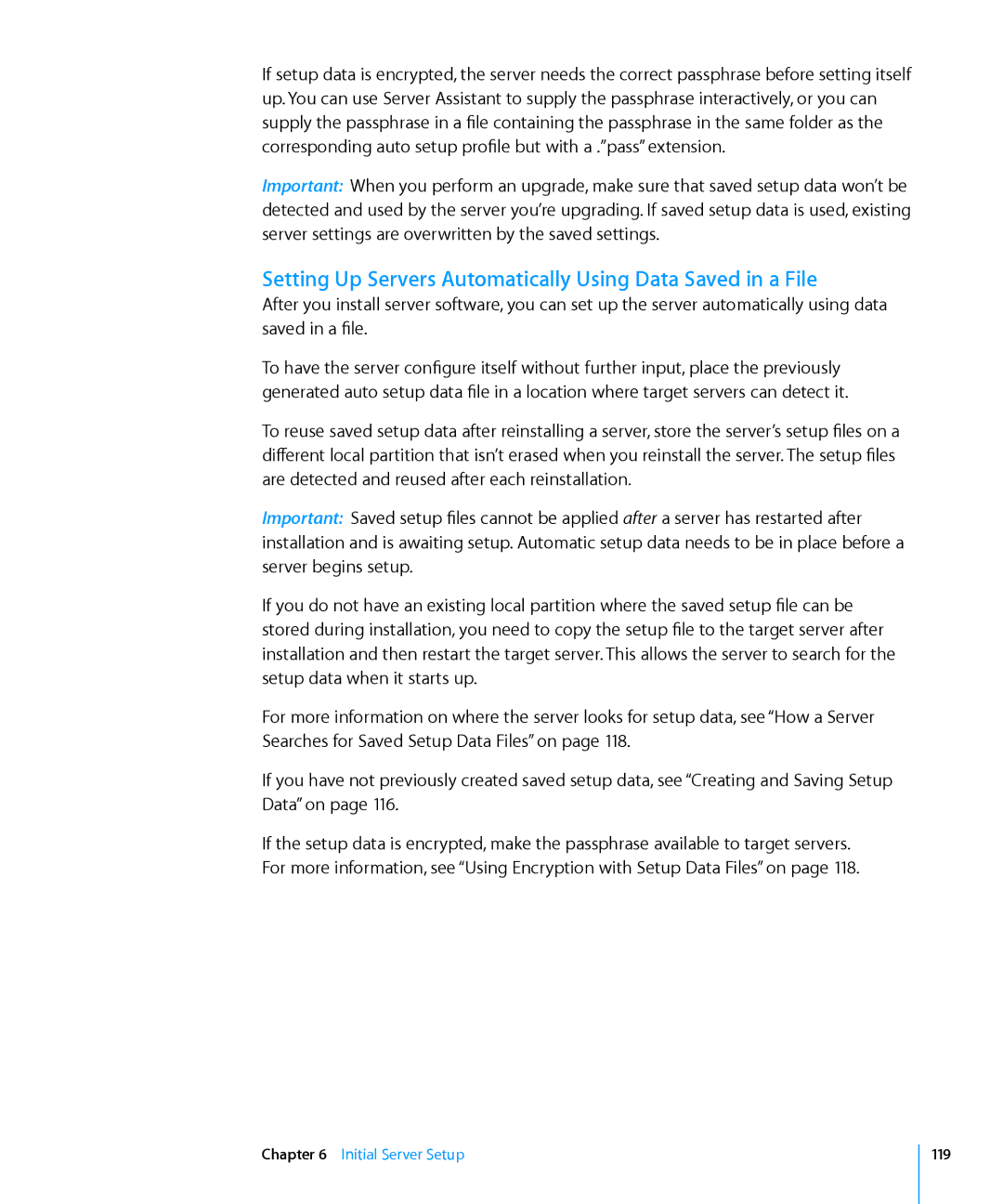If setup data is encrypted, the server needs the correct passphrase before setting itself up. You can use Server Assistant to supply the passphrase interactively, or you can supply the passphrase in a file containing the passphrase in the same folder as the corresponding auto setup profile but with a .”pass” extension.
Important: When you perform an upgrade, make sure that saved setup data won’t be detected and used by the server you’re upgrading. If saved setup data is used, existing server settings are overwritten by the saved settings.
Setting Up Servers Automatically Using Data Saved in a File
After you install server software, you can set up the server automatically using data saved in a file.
To have the server configure itself without further input, place the previously generated auto setup data file in a location where target servers can detect it.
To reuse saved setup data after reinstalling a server, store the server’s setup files on a different local partition that isn’t erased when you reinstall the server. The setup files are detected and reused after each reinstallation.
Important: Saved setup files cannot be applied after a server has restarted after installation and is awaiting setup. Automatic setup data needs to be in place before a server begins setup.
If you do not have an existing local partition where the saved setup file can be stored during installation, you need to copy the setup file to the target server after installation and then restart the target server. This allows the server to search for the setup data when it starts up.
For more information on where the server looks for setup data, see “How a Server Searches for Saved Setup Data Files” on page 118.
If you have not previously created saved setup data, see “Creating and Saving Setup Data” on page 116.
If the setup data is encrypted, make the passphrase available to target servers. For more information, see “Using Encryption with Setup Data Files” on page 118.
Chapter 6 Initial Server Setup
119
